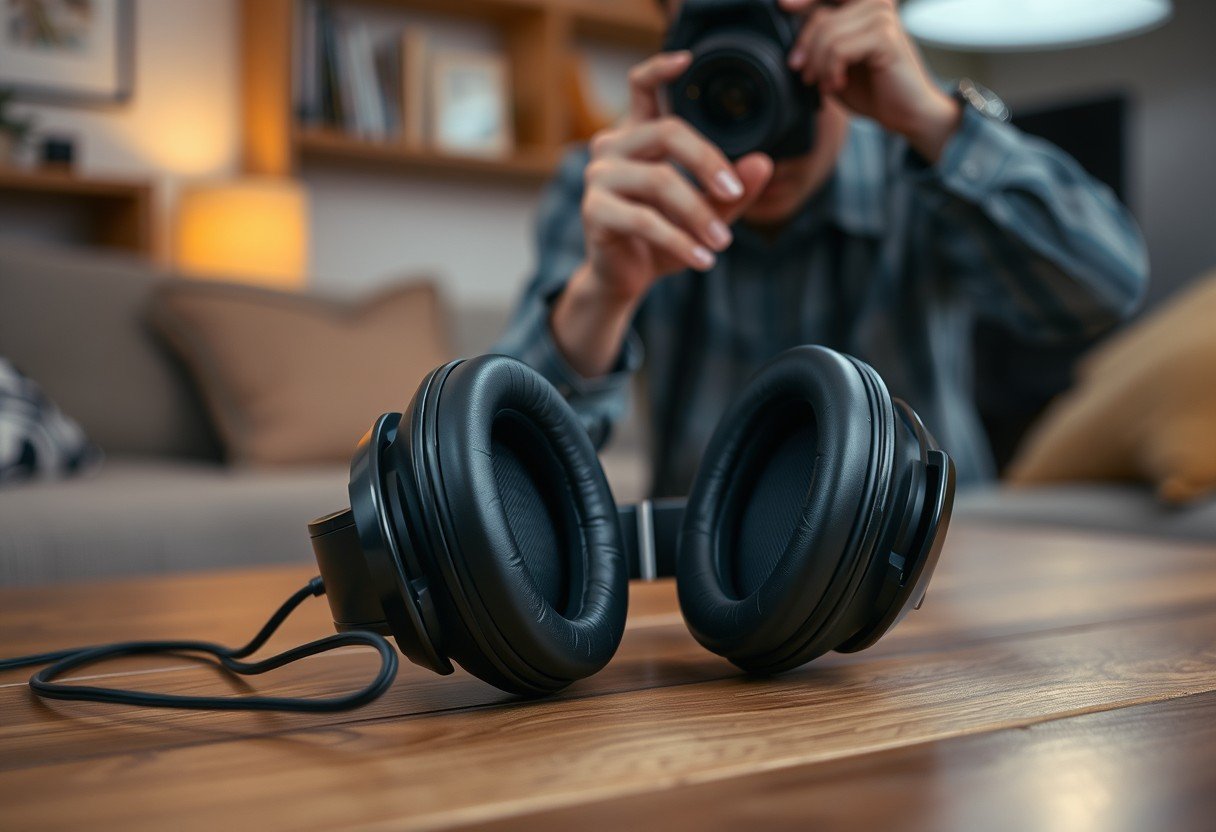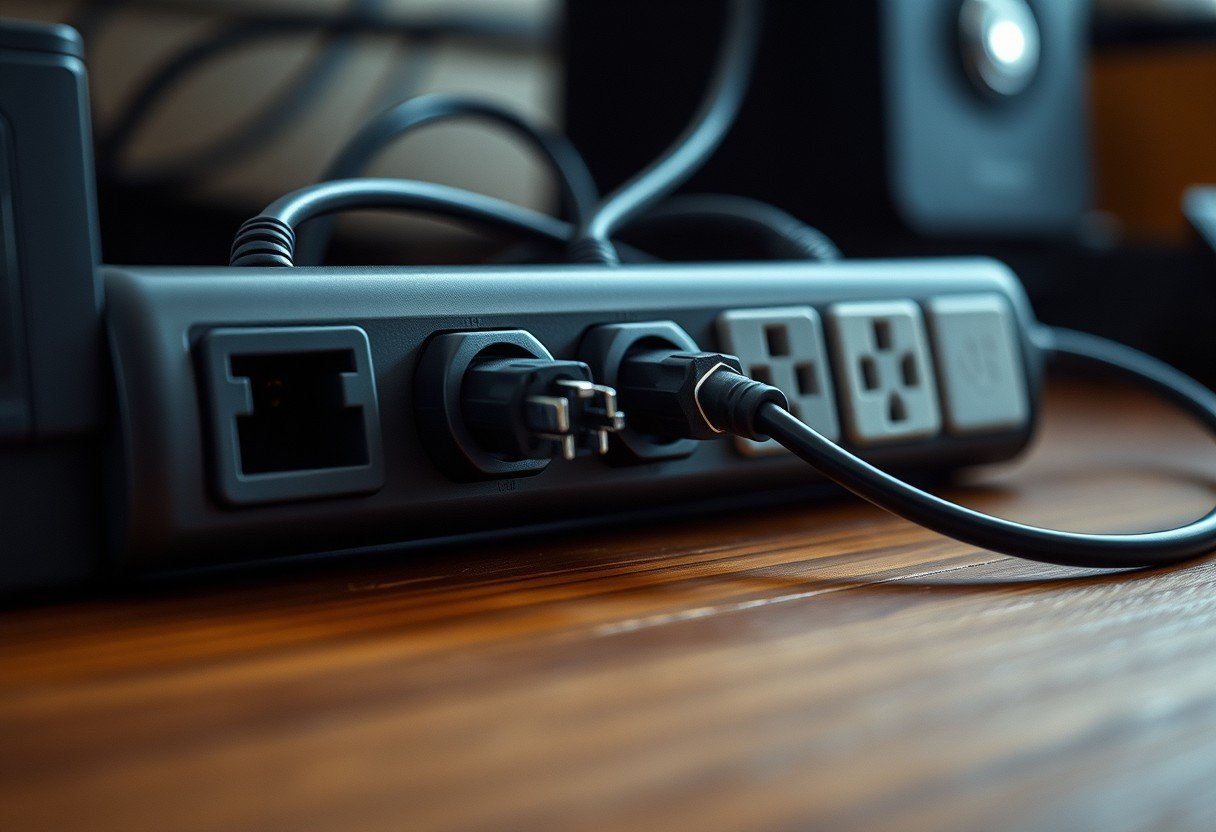Open-back headphones are praised for their natural and spacious sound, creating an immersive listening experience. However, this unique design comes with its own set of challenges that can affect your enjoyment. From sound leaking out to noise getting in, it’s crucial to understand these potential drawbacks before you buy. Knowing these common problems helps you decide if they are the right fit for your listening habits and environment.
The Challenge of Sound Leakage
One of the most defining characteristics of open-back headphones is sound leakage. Because the earcups are not sealed, sound can travel freely in and out. This means that people around you can often hear what you’re listening to.
This can be a significant issue in quiet settings like an office, library, or on public transportation. You might find yourself being considerate by keeping the volume low, which can compromise your own listening experience. The sound leakage can inadvertently disturb others, making these headphones unsuitable for shared spaces.
Furthermore, this leakage can also impact your social interactions. It might make you feel self-conscious or lead to awkward situations if your music choices intrude on those nearby. Being mindful of your environment is key to using open-back headphones without causing disruption.
Why Noise Isolation is a Weak Point
Just as sound can get out, external noise can easily get in. Open-back headphones offer very poor noise isolation, which is a major drawback for many users. Their design is intended to create a more open soundstage, but this comes at the cost of blocking out the world around you.
If you plan to listen in noisy environments, you will likely find it difficult to focus on your audio. The sounds of traffic, conversations, or a busy café will bleed into your music, forcing you to turn up the volume to potentially unsafe levels to compensate.
This makes them a poor choice for commuting or any situation where you need to block out distractions. For a clearer picture, consider where they perform best and worst:
- Ideal for: Quiet rooms, dedicated home listening sessions.
- Not Ideal for: Public transportation, crowded cafes, office spaces, or outdoor use.
To better understand the key differences, here is a simple comparison with closed-back headphones.
| Feature | Open-Back Headphones | Closed-Back Headphones |
|---|---|---|
| Sound Leakage | High (sound escapes easily) | Low (sound is contained) |
| Noise Isolation | Low (lets ambient noise in) | High (blocks ambient noise out) |
| Soundstage | Wide and natural | Narrow and in-your-head |
| Best Environment | Quiet, private spaces | Noisy environments, public use |
Understanding the Limited Bass Response
If you are a fan of bass-heavy music genres like hip-hop or EDM, you might find the low-end response of many open-back headphones to be underwhelming. Due to their open design, they struggle to build up the air pressure needed to produce a deep, impactful bass.
The sound waves disperse into the environment instead of being trapped and reflected toward your ear. This results in a sound profile that is often described as more balanced or neutral, but for some, it can feel light on bass and lack the punch they desire.
Fortunately, there are ways to address this. Using an equalizer (EQ) to boost the lower frequencies can help compensate for the natural bass roll-off. Pairing your headphones with a dedicated headphone amplifier can also provide the power needed to drive the low-end more effectively. Some manufacturers also produce open-back models specifically tuned for a better bass response, so doing your research can lead you to a pair that fits your taste.
Build Quality and Durability Concerns
Not all open-back headphones are created equal when it comes to durability. The exposed design, often featuring grilles or mesh, can make the internal drivers more vulnerable to dust, moisture, and accidental damage compared to the sealed design of closed-back models.
Cheaper models, in particular, may use lower-quality plastics and materials that are prone to wear and tear over time. It’s important to examine the materials used, such as metals, high-grade plastics, and durable fabrics, to gauge the longevity of the headphones.
Proper maintenance is also crucial for extending their lifespan. Regularly cleaning the earpads and storing the headphones in a case can prevent damage and keep them performing well for years. Taking good care of your investment ensures you can continue to enjoy their high-quality sound without interruption.
Considering Weight and Long-Term Comfort
Comfort is key, especially during long listening sessions. While many open-back headphones are designed with ergonomics in mind, their weight can vary significantly. Heavier models can cause strain on your head and neck over time, leading to fatigue and discomfort.
Look for headphones that distribute weight evenly and feature an adjustable headband and plush, cushioned ear pads. The goal is to find a pair that feels secure without creating uncomfortable pressure points.
The weight of the headphones directly impacts how long you can wear them comfortably. An overly heavy pair can turn an immersive audio experience into a distracting one. It’s always a good idea to try on different models if possible to find a balance between a solid build and a lightweight feel that works for you.
Device Compatibility and Power Requirements
A common oversight is failing to consider if your devices can properly power a pair of open-back headphones. Many models, especially high-end ones, have a high impedance, which means they require more power to reach optimal volume and sound quality.
Plugging them directly into a smartphone or laptop may result in a quiet, lifeless sound. To get the best performance, you often need to pair them with a dedicated headphone amplifier or a Digital-to-Analog Converter (DAC).
This need for extra equipment can make them less portable and add to the overall cost. Before purchasing, always check the headphone’s impedance and sensitivity specifications and match them with your audio source to avoid disappointment and ensure you experience their full potential.
Frequently Asked Questions
Why do open-back headphones leak so much sound?
They leak sound by design. The earcups have perforations or grilles that allow air and sound to pass through, which creates a more natural and spacious soundstage. However, this means others nearby can hear your audio.
Are open-back headphones good for noisy places?
No, they are generally not suitable for noisy environments. Their open design provides poor noise isolation, allowing external sounds like traffic or conversations to mix with your audio and disrupt your listening experience.
Do I need an amplifier for open-back headphones?
Many high-end open-back headphones have high impedance and benefit greatly from a dedicated amplifier. An amplifier provides the necessary power to drive them properly, resulting in better clarity, dynamic range, and overall sound quality.
Can I improve the bass on my open-back headphones?
Yes, you can often improve the bass. Using an equalizer (EQ) to boost the low frequencies is a common solution. A good headphone amplifier can also help provide a more controlled and impactful bass response.
Are open-back headphones more fragile?
They can be more susceptible to damage due to their exposed drivers. The open grilles offer less protection from dust, moisture, and physical impact compared to the sealed earcups of closed-back models.









Leave a Comment